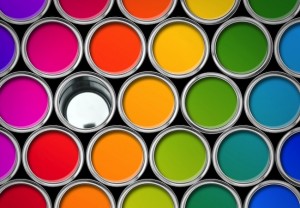Insulation, drywall, flooring and paint are the materials most commonly associated with the interior work phase of a residential construction project. Flooring choices vary, however, the product that is most likely to cause damage to watercourses is tile. Insulation is used in every project but the risks to the surrounding environment associated with insulation are low. Drywall, tile and paint are the three materials most likely to cause damage when used and not properly handled onsite.
Drywall is a material used to make walls, ceilings and other features within a home. Prior to using drywall, plaster was used but drywall is a much more user friendly, cost and time effective material. Drywall is made of gypsum plaster pressed between two sheets of paper. When removed from a home, drywall must first be tested for asbestos and then recycled. On the North Shore, drywall can be recycled in limited quantities at Wastech. For quantities in excess of what Wastech can manage, drywall must be taken to New West Gypsum Recycling. When allowed to be exposed to precipitation, drywall can disintegrate and the gypsum component of drywall can potentially be washed into the storm water system. Gypsum adds suspended solids into the receiving aquatic environment.
Tile is a popular flooring choice for kitchens and bathrooms. Standard tile installation technique involves cutting of the tile outside with a tile saw. Tile saws use water to keep the dust down when tile is cut. When property managed, tile saw residue is disposed off correctly and this residue is not released into the storm system. When managed incorrectly, tile saw residue can be released into the storm water system where it is damaging to aquatic organisms.
Paint and paint thinners can be toxic if released into aquatic environments. Paint is comprised of a pigment, a binder and a solvent. Binders are either oil or latex based. While paint is not often directly released into the storm system or surrounding environment, paint brushes and other equipment are often cleaned near storm system catch basins and this paint wash water is then released into the surrounding aquatic environment.
When possible, latex based paints should be chosen for use because they are the least hazardous option to aquatic organisms if accidentally released into the storm water system. Paint brushes and other equipment should never be cleaned near the storm water system.
Mitigation to manage the potential negative effects of drywall, tile and paint can be implemented to reduce the impact to the surrounding watercourses and watersheds.

